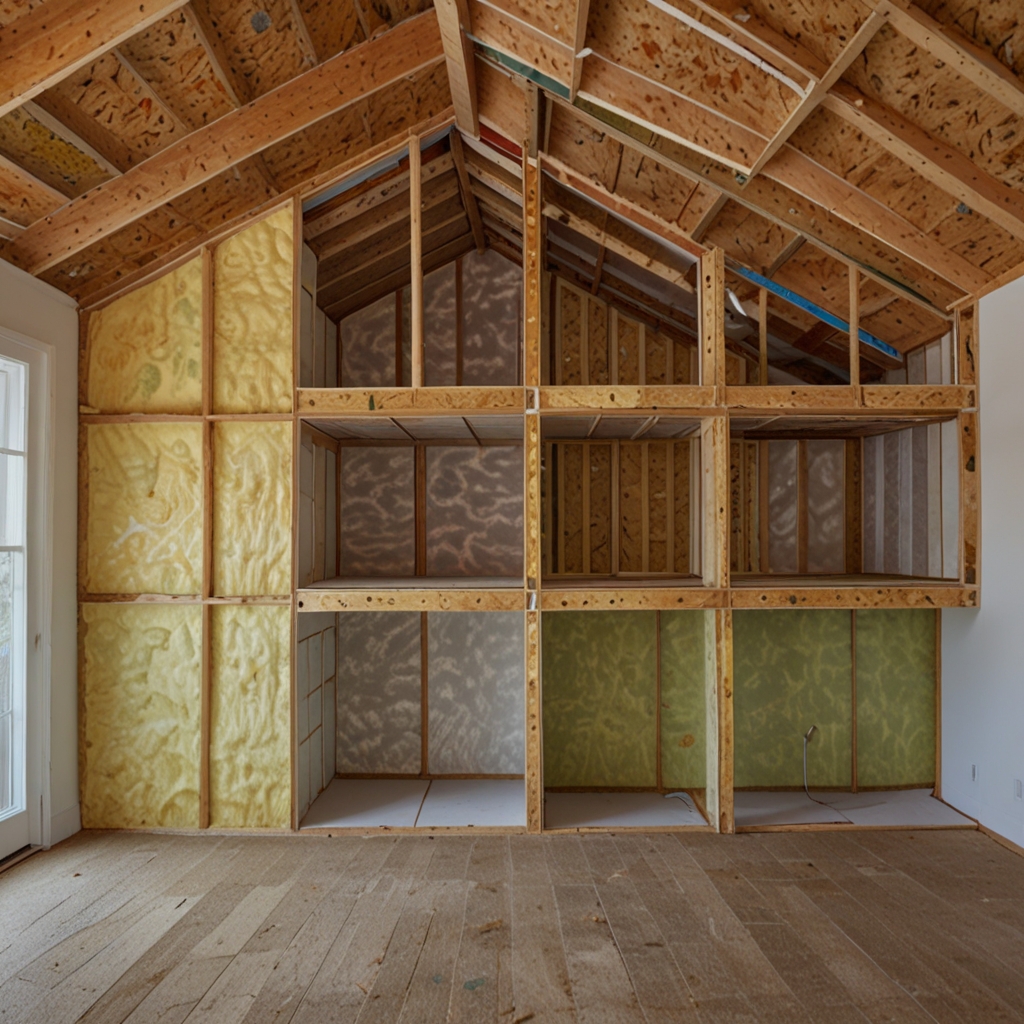Choosing the right insulation is one of the most important decisions you can make when it comes to improving your home’s energy efficiency, comfort, and overall value. Proper insulation helps maintain a consistent temperature inside your home, reduces energy bills, and can even improve indoor air quality. With various types of insulation available, it’s crucial to understand the options and factors that influence the best choice for your home.
1. Understand R-Value and Climate
The effectiveness of insulation is measured by its R-value, which indicates its ability to resist heat flow. The higher the R-value, the better the insulation’s performance. The right R-value depends on your climate and where the insulation will be installed in your home (walls, attic, floors, etc.).
- Cold Climates: In colder regions, a higher R-value is needed to keep the heat inside during winter. Consider insulation with an R-value of R-49 or higher for attics and R-19 to R-21 for walls.
- Warm Climates: In warmer areas, insulation with a lower R-value can be sufficient, as the goal is to keep the heat out. An R-value of R-30 to R-38 for attics and R-13 to R-15 for walls may be appropriate.
- Mixed Climates: If you live in an area with both hot summers and cold winters, a balanced R-value that meets the needs of both seasons is important.
2. Types of Insulation
There are several types of insulation, each with its advantages and disadvantages. The best choice depends on your budget, the area of your home that needs insulation, and specific requirements like moisture resistance or fire safety.
- Fiberglass Insulation: This is one of the most common types and is made from fine glass fibers. It’s available in batts, rolls, and loose-fill. Fiberglass is non-combustible, resistant to moisture, and provides good thermal performance, but it can be irritating to the skin and lungs during installation.
- Spray Foam Insulation: Spray foam expands on application, filling gaps and creating an airtight seal. It has a high R-value and is excellent for hard-to-reach areas. However, it can be more expensive than other options and should be installed by professionals.
- Cellulose Insulation: Made from recycled paper products, cellulose is an eco-friendly option. It’s treated with fire retardants and provides good thermal performance. Cellulose is ideal for filling cavities and can be blown into walls and attics, but it may settle over time, reducing its effectiveness.
- Rigid Foam Insulation: This type offers a high R-value and is often used for insulating foundation walls and exterior sheathing. Rigid foam is moisture-resistant and provides a solid barrier, but it can be more expensive and requires careful installation to prevent gaps.
- Mineral Wool Insulation: Also known as rock wool, this insulation is made from natural rock and metal waste. It’s fire-resistant, soundproof, and provides excellent thermal performance. Mineral wool is ideal for areas where fire safety is a concern, such as around chimneys or furnaces.
3. Consider Installation Area
Different areas of your home require different types of insulation based on accessibility, exposure to moisture, and other factors.
- Attics: Since heat rises, attics are a primary area for heat loss. Loose-fill or batt insulation with a high R-value is often recommended for attics.
- Walls: For walls, you can use batt, spray foam, or blown-in insulation. The choice depends on whether you’re insulating existing walls or during new construction.
- Basements and Crawl Spaces: Moisture resistance is key in these areas. Rigid foam insulation is often the best choice for basements, while spray foam or mineral wool can be used in crawl spaces.
- Floors: Insulating floors above unheated spaces like garages or basements can prevent heat loss. Fiberglass batts or rigid foam are common options for these areas.
4. Factor in Costs and Return on Investment (ROI)
While it might be tempting to choose the cheapest option, it’s important to consider the long-term savings. Higher-quality insulation with a better R-value might cost more upfront but can lead to significant energy savings over time.
- Initial Costs: Consider your budget, but also think about how the insulation will perform in the long run. More expensive materials like spray foam may offer better ROI due to lower energy bills.
- Energy Savings: Check potential savings by calculating the reduction in energy costs with improved insulation. Many high-R-value insulations pay for themselves within a few years through reduced utility bills.
